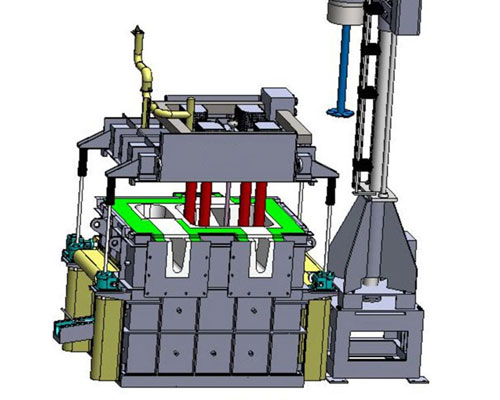After the die-casting aluminum alloy is melted and refined, the molten aluminum is taken after refining and degassing, the time before and after the refining agent is added, the nitrogen flow rate of the rotating degassing, the speed of the degassing unit graphite rotor, the degassing time, the diameter and height of the graphite rotor. The density of molten aluminum is measured and analyzed during the production process.
After degassing, the degassing effect of different positions of the aluminum liquid in the subcontract is inconsistent, and the position near the turntable is the worst;
Nitrogen flow has a certain impact on the bubble generation location, and the large flow bubble spreads farther, but it causes more serious aluminum liquid toss, which will cause production safety hazards;
The speed has a great influence on the degassing effect of the aluminum melt, and the high speed can ensure more sufficient gas diffusion and ensure that the molten aluminum does not roll;
The putting time of the refining agent has little effect on the rotating degassing, and it cannot achieve the purpose of refining the inside of the molten aluminum. The surface scum on the surface of the aluminum melt can be treated. It is recommended to use a slag remover to treat the surface aluminum slag. According to the refining agent specification, the use temperature of the refining agent is 700-750℃, and the use temperature of the slag removal and degassing agent is ≥680℃. Difficult to control;

The speed and nitrogen flow must be used together to ensure the degassing effect and the aluminum liquid will not roll and be oxidized. The flow rate of 15L/min at 400r/min can meet the requirements;
During the degassing process, the rolling condition of the molten aluminum and whether the molten aluminum splashes have an impact on the degassing and oxidation of the molten aluminum.
After degassing, the aluminum slag on the surface of the aluminum melt and the sample density can reflect the degassing effect of the aluminum melt.

